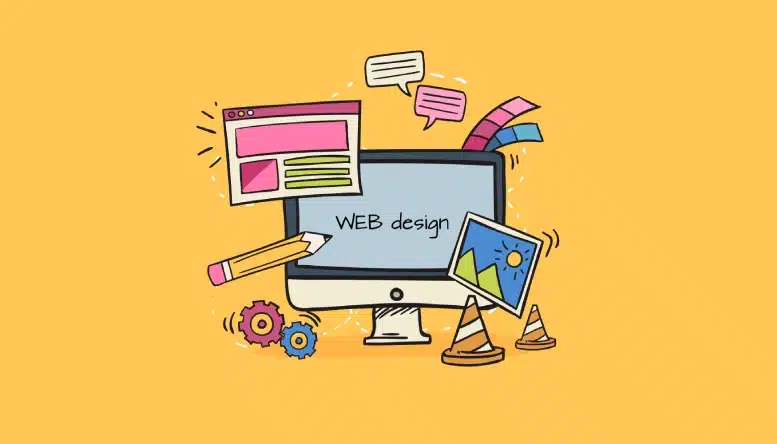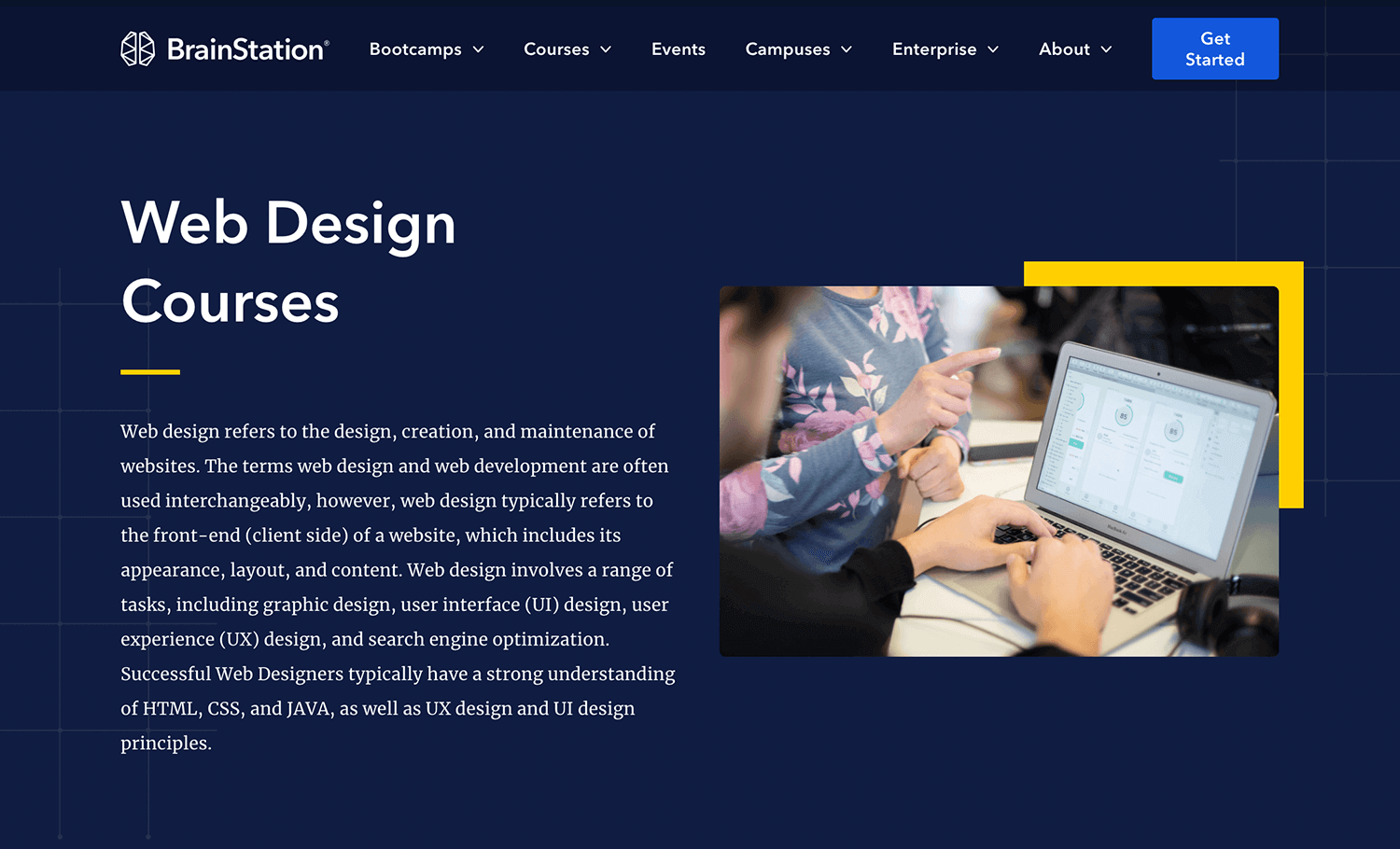Innovative Aligned Position Web Design: Future-Proof Websites for Businesses in Every Niche
Innovative Aligned Position Web Design: Future-Proof Websites for Businesses in Every Niche
Blog Article
The Most Effective Sorts Of Web Layout to Improve User Experience and Involvement
In the ever-evolving landscape of digital interaction, the efficiency of Web style substantially affects customer experience and engagement. Various design approaches, such as minimalist, receptive, and interactive layouts, each offer unique advantages that can provide to varied individual demands.
Minimal Web Style
As digital landscapes become significantly cluttered, minimal website design has actually emerged as a powerful approach to boosting individual experience. This layout ideology focuses on simplicity, concentrating on vital components while removing unneeded interruptions. By utilizing ample white space, straightforward navigation, and a minimal shade combination, minimalist layout fosters clearness and directs customer focus to essential content.
The core principle of minimalist Web style is to create a smooth interaction for users. By decreasing cognitive lots, individuals can swiftly grasp details without feeling overwhelmed. This straight technique not only boosts usability yet additionally motivates engagement, as site visitors are much more most likely to check out a site that is simple and aesthetically attractive to browse.
Furthermore, minimalist design usually emphasizes typography and imagery, using these components purposefully to convey messages successfully. In significance, minimal Web design is not simply a trend; it is a thoughtful method that identifies the importance of user-centered design.
Responsive Website Design
In today's diverse digital atmosphere, responsive Web layout has become essential for creating a seamless individual experience across a plethora of tools. As individuals accessibility sites on mobile phones, desktops, tablets, and laptops, the ability of an internet site to adapt its format and web content to various display sizes and resolutions is important.
Responsive Web design uses adaptable grids, photos, and CSS media inquiries to guarantee that Web content exists ideally, no matter of the gadget utilized. This method not only boosts the aesthetic charm of a web site yet likewise substantially improves usability. Customers are most likely to engage with a site that supplies a constant experience, as it eliminates the aggravation of needing to focus or scroll excessively.
Moreover, search engines, consisting of Google, prioritize mobile-friendly internet sites in search positions. By embracing receptive style, businesses can boost their exposure and reach a more comprehensive audience. This approach likewise streamlines site upkeep, as a single variation of the site can accommodate all gadgets, reducing the demand for numerous versions. In recap, responsive website design is a basic method that enhances individual experience, involvement, and general contentment.
Interactive Website Design
Receptive Web style lays the foundation for enhancing individual experience, yet interactive Web style takes this an action further by engaging individuals in an extra vibrant way - Aligned Position Web Design. By integrating components such as computer animations, clickable prototypes, and real-time feedback, interactive website design astounds users, drawing them into a richer browsing experience
This method not just promotes interaction yet additionally urges users to explore content actively as opposed to passively consuming it. Methods such as gamification, where individuals make benefits for finishing jobs, can significantly enhance the time spent on a website and boost overall complete satisfaction. Interactive attributes can simplify complex info, making it a lot more pleasurable and digestible.

Including interactive layout elements can web also bring about greater conversion rates, as individuals are more probable to engage with a site that actively involves them. Aligned Position Web Design. Ultimately, interactive website design transforms individual experiences right into remarkable journeys, ensuring that visitors return time after time
Flat Style
Defined by its minimalistic strategy, flat design emphasizes simplicity and functionality, removing unnecessary aspects and concentrating on crucial attributes. This layout ideology focuses on use, great post to read making certain that users can navigate user interfaces with ease and efficiency. By using a tidy visual, level style gets rid of the clutter typically discovered in much more ornate styles, thus enhancing user emphasis on content and capability.
The trademark of level layout exists in its use of bold shades, simple typography, and geometric forms. These components contribute to an aesthetically attractive interface that is both approachable and modern. In addition, flat design cultivates a sense of clearness, permitting customers to discern essential actions and information without distraction.
Furthermore, level design is particularly reliable in receptive Web design, as its simpleness translates well throughout different devices and display sizes. The lack of complex textures and slopes lessens filling times, which is important for maintaining customer engagement. As electronic landscapes continue to develop, flat style stays a relevant choice for developing straightforward internet sites that boost overall experience. By concentrating on necessary functions, level style not only satisfies customer demands yet additionally urges seamless communication, making it a vital part of efficient Web design techniques.
Adaptive Web Style
Flexible Web style tailors the customer experience by creating numerous dealt with layouts tailored to different screen sizes and devices. Unlike responsive style, which fluidly changes a single design, flexible design employs distinct layouts for specific breakpoints, guaranteeing ideal discussion on numerous platforms. This method allows designers to focus on the distinct qualities of each gadget, enhancing usability by delivering precisely what users require based upon their context.
Among the key benefits of flexible Web design is its capacity to enhance lots times and performance. By offering tailored web content and photos that fit the customer's gadget, internet sites can decrease information use and enhance loading speeds. This is particularly advantageous for users with slower links or restricted information plans.

Furthermore, flexible design facilitates an extra controlled and constant branding experience. Considering that developers create several formats, they can make sure that the visual aspects straighten with the brand's identity throughout different systems - Aligned Position Web Design. This results in a cohesive individual experience, boosting involvement and promoting individual retention
Conclusion
Minimal style fosters clarity and focus, while receptive layout ensures adaptability throughout numerous gadgets, promoting ease of access. Collectively, these layout comes close to add to the production of easy to use environments that you could try these out not only boost fulfillment however additionally drive greater conversion rates, emphasizing their essential value in contemporary Web style approaches.

Minimalist style promotes clearness and emphasis, while receptive style makes sure flexibility throughout various gadgets, promoting availability. Collectively, these style approaches contribute to the creation of user-friendly atmospheres that not just boost contentment yet additionally drive greater conversion rates, highlighting their vital relevance in modern Web style techniques.
Report this page